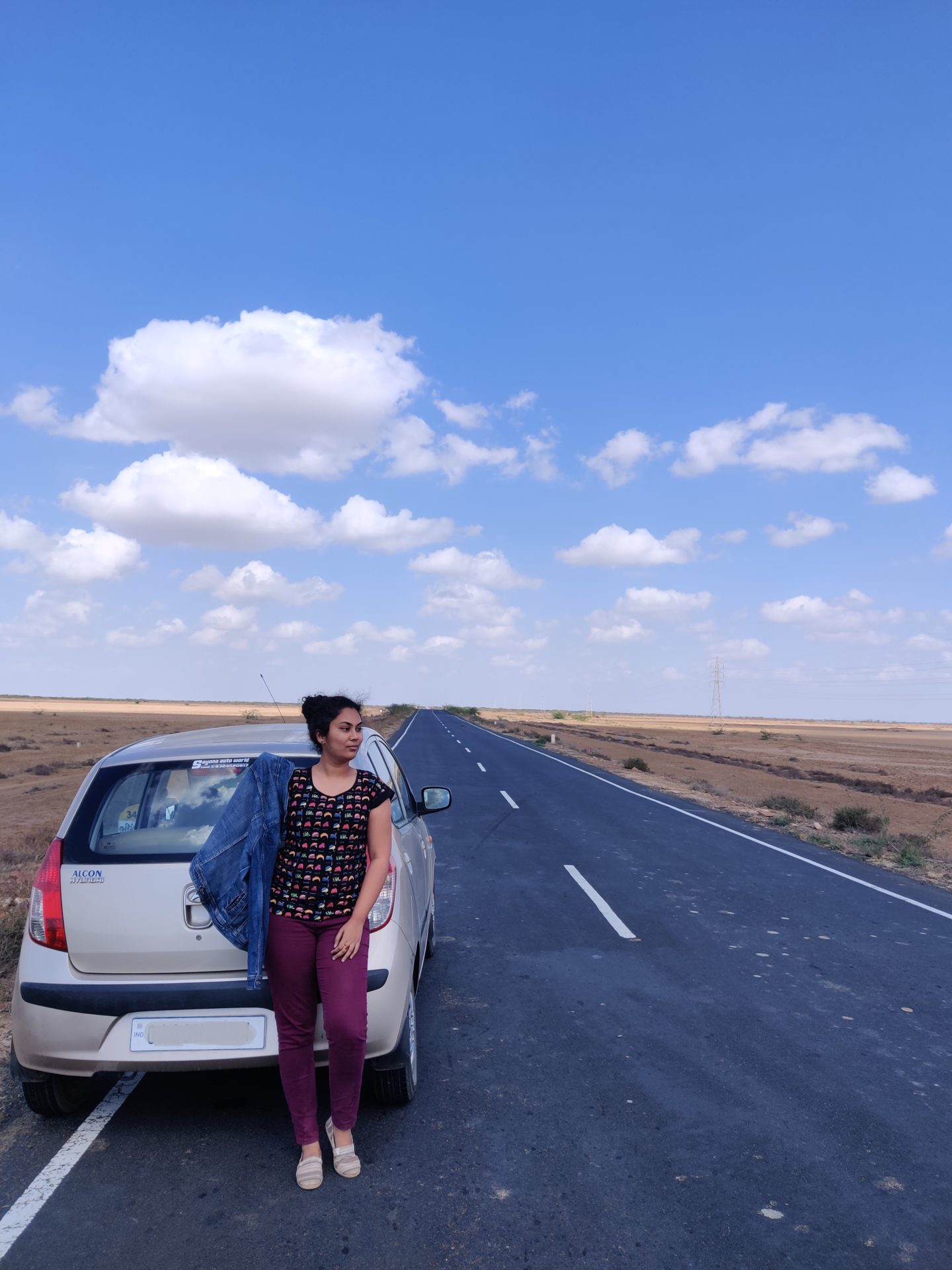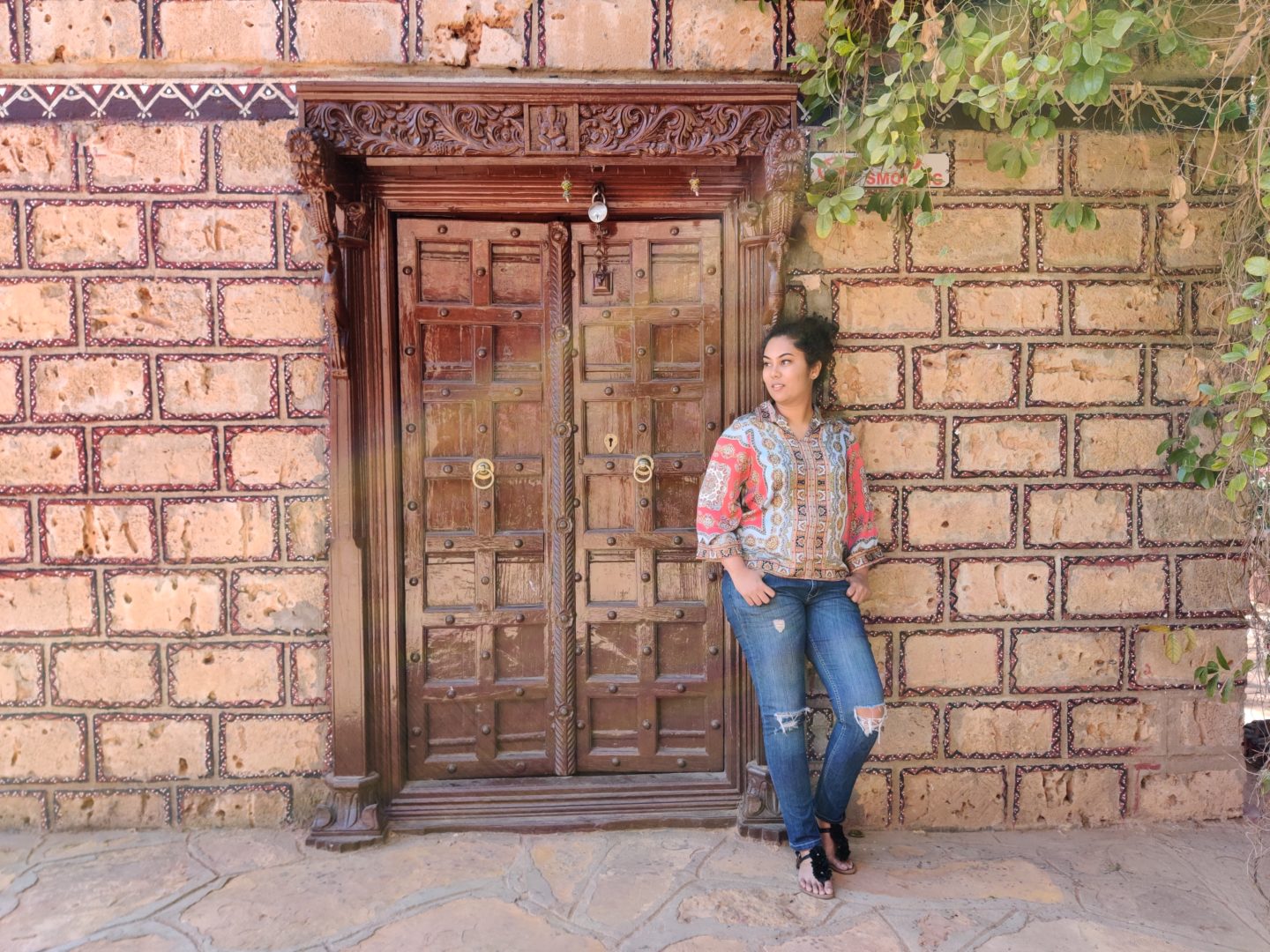Bhuj, the erstwhile capital of the princely state of Kutch was known for its wealth that came from sea-trade, and for the bartering of African slaves for Indian textiles. Today, the town doesn’t allure travellers as much as the Rann of Kutch does. The Rann (translating to Salt Marsh) has been hogging the spotlight, and Bhuj, its nearest town, is merely seen as a stopover on the way to the Rann Utsav, a Gujarat Tourism initiative that takes place between November and February, when the wetland dries up, leaving a vast expanse of white salt flats behind.
HOW TO TRAVEL TO BHUJ
If you’re adventurous, you can seriously consider a road trip from Mumbai to Bhuj, or from anywhere in India to Bhuj for that matter. The roads in Gujarat are excellent and make for a very enjoyable drive. You could also hop on a flight as the nearest airport to Bhuj is 4 kms away. Alternatively, you can get on a bus to any city in Gujarat and then change buses to get to Bhuj – there is no shortage of them. Lastly, if you choose to travel by train, it is most convenient to get a train to Bhuj from Mumbai and the journey lasts around 15 hours – just a little less than that of a road trip.

I should mention though, that getting around once you’re *in* Bhuj is no piece of cake. The public transport facilities are not developed, there are little-to-no self-drive vehicles and you would need to rely on your hotel receptionist to book you a cab everywhere. This is why doing a road trip and having your vehicle with you makes the most sense – as many of the places worth seeing in Bhuj are off the beaten track.
EXPLORE BHUJ AND ITS SURROUNDING HANDICRAFT VILLAGES
Bhuj is an enchanting town and is an extremely affordable backpacker destination in India. Magnificent palaces, noisy marketplaces, beautiful architectural treasures and world-class textiles and handicrafts make it a fascinating place to spend a couple of days. While most of Bhuj had been destroyed in the massive earthquake of 2001, much of it has been rebuilt – the scars still visible; though much has been lost, too.
Like the rest of Gujarat, Bhuj is a vegetarian town. It is a comfortable place to park your bags and it offers plush accommodation on a budget as you explore the colourful villages surrounding it. I stayed at Hotel Kutch Desert, which was the first place we walked in to at 11:30 PM, that luckily turned out to be pretty good. If you’re a digital nomad, you’ll find there to be excellent connectivity to work in Bhuj, but no cafes or restaurants where you can spend the day working out of – that culture is alien here.
6 INTERESTING THINGS TO DO IN BHUJ
GET A FEEL OF THE LOCAL MARKET – Watching people go about their day in a new place is something I can do for hours! We walked around the main market one morning and stopped for breakfast at Gayatri Fast Food, a no-frills place with upstairs open-air seating from where we could watch the market scenes unfold below.
VISIT AINA MAHAL AND PRAG MAHAL – The two ancient palaces in one compound are the jewels of Bhuj and rightfully so! The Prag Mahal looks like it was shipped here in its entirety from Europe – with its Neo-Gothic architecture, 150-foot tall clock tower, elaborate pillars and gold-gilded carvings depicting everything from tiny squirrels to life-size men holding up the ceiling. I can bet that at every turn, you will stop, open-mouthed to stare at the opulence of this magnificent palace, built by Rao Pragmaji way back in 1838! I can only imagine how much more lavish it must have seemed back then in the 19th century when Col Henry Wilkins was paid a whopping 31 lakhs to design at that time. Entry to Prag Mahal costs Rs. 20 per person with mobile photography allowed. Bringing professional photography equipment is chargeable.
Aina Mahal, the older of the two palaces, looks even more forlorn but doesn’t lack in wealth. Built by Maharaja Rao Lakhpatji, it is more like a museum than a palace. The doors have carvings made with ivory and mirrors of every shape and size stretch from wall to wall, in gold frames. You’ll see arms and ammunition, paintings, coins, hookah equipment and more as you walk from room to room. Entry to the Aina Mahal is Rs. 20 per person and the charge for phone photography is Rs. 50. The staff is extremely alert and follows you around to ensure you don’t click a single photograph without buying a photography pass – and if you do, they will impose a fine you of Rs. 500.
Both these palaces in Bhuj have, what seems like a shadow of gloom cast over them, perhaps due to being at the mercy of man and nature… and due to the descent from the height of power to being a mere tourist attraction today. The palaces can be visited at leisure in one morning itself.
RAMKUND STEPWELL – Not really worth stopping to see, but I did so just to compare it with the step-wells in Hampi and Jodhpur. The Ramkund Stepwell in Bhuj is not very well maintained and you could pop in and out in less than 15 minutes. It seems to be more of a hangout spot among local youth and a place for pre-wedding photo shoots (there was one going on when I was there!) than a tourist attraction in Bhuj.
SWAMINARAYAN TEMPLE – I wasn’t really expecting to enjoy this temple as much as I did, but you can’t deny the tranquillity and grandeur of the place. Visit this stunning white marble temple a little before sunset and watch as it changes colours from blush pink to flaming orange as the sun sets, while you enjoy the strong breeze. Whether or not you like visiting religious places in India, I’d suggest visiting this one because of its beauty and good vibrations!
VISIT THE FAMOUS HANDICRAFT VILLAGES OF BHUJ – If you go to Bhuj and don’t explore a few of the handicraft villages, you’re missing out! I’m no shopper myself, but I simply couldn’t resist buying a couple of leather bags, some key chains, gorgeous shawls and more – made by local artisans and sold at unbeatable prices. Kutch is known around the world for its handicrafts, and watching the craftsmen at work in Bhujodi Village is both enlightening and fascinating.
Bhujodi has smaller versions of the Red Fort (called ‘Yellow Fort’ here), the Parliament and a statue of Gandhi – all of which are found in Delhi. One section of the massive arena features around 30 little huts that the government gives to 30 different craftsmen every month and it truly is a shoppers’ paradise as you hop from hut to hut chatting with craftsmen, browsing through their wares and being oh-so-tempted! I’d also highly recommend the Khamir Craft Resource Centre for the ingenious, beautiful products they make and sell from scarves to shoes and from books to bags and purses made of recycled plastic! They also have handicraft workshops that you need to book in advance for. Lastly, I had read about the village of Nirona and drove all the way there but it seemed pretty much deserted.
DON’T MISS OUT ON THE FOOD – There’s very little said about the food in Bhuj, but I totally enjoyed whatever I tried. The Puri Shak at Gayatri Puri Centre is delicious, try the Dabeli at Kishan Dabeli stall and the Gujarati Thali at Umayiji Dining Hall. Since there’s no information about the best food in Bhuj, these are just places I happened to eat at and really enjoyed – I’m sure there are better options available.
That’s about all I did during my 3-4 days in Bhuj, before heading off to explore the White Rann. Hope you enjoyed reading this post, and that you take some time to explore this gem of a place in Gujarat. For more such offbeat destinations in India, check out my blog posts on Nainital, Pollachi and the mangroves of Pichavaram. You can catch my latest adventures on Facebook, Twitter and Instagram.
